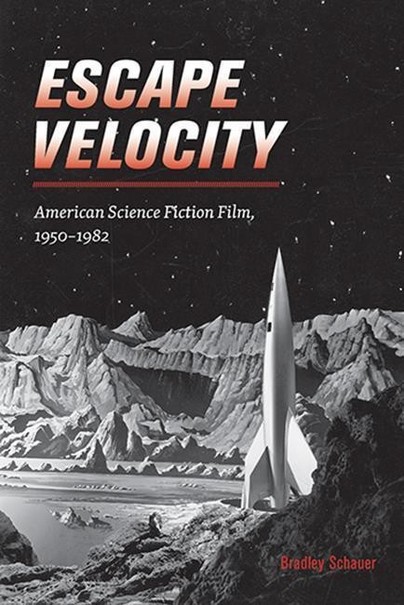
Format: Paperback
Pages: 288
ISBN: 9780819576590
Pub Date: 03 Jan 2017
Illustrations: 25 illus.
Description:
Today, movie theaters are packed with audiences of all ages marveling to exciting science fiction blockbusters, many of which are also critically acclaimed. However, when the science fiction film genre first emerged in the 1950s, it was represented largely by exploitation horror films—lurid, culturally disreputable, and appealing to a niche audience of children and sci-fi buffs. How did the genre evolve from B-movie to blockbuster?
Escape Velocity charts the historical trajectory of American science fiction cinema, explaining how the genre transitioned from eerie low-budget horror like It Came from Outer Space to art films like Slaughterhouse-Five, and finally to the extraordinary popularity of hits like E.T. Bradley Schauer draws on primary sources such as internal studio documents, promotional materials, and film reviews to explain the process of cultural, aesthetic, and economic legitimation that occurred between the 1950s and 1980s, as pulp science fiction tropes were adapted to suit the tastes of mainstream audiences. Considering the inescapable dominance of today’s effects-driven blockbusters, Escape Velocity not only charts the history of science fiction film, but also gives an account of the origins of contemporary Hollywood.

Format: Hardback
Pages: 240
ISBN: 9781938086427
Pub Date: 16 Dec 2016
Illustrations: 185 ambrotype plates (including 10 foldouts), 2 duotones, and 2 color photographs by the author, 4 historic photographs, and 4 black-and-white maps
Description:
Take Me to the River explores four post-industrial rivers that flow into the Atlantic Ocean—the Androscoggin (Maine/New Hampshire), Schuylkill (Pennsylvania), James (Virginia), and Savannah (Georgia/South Carolina)—as they emerge from two centuries of use and neglect. With vastly improved water quality in each river since enactment of the 1972 Clean Water Act, public affection has gradually increased as memories of foul smells and fetid water fade. Today, these rivers still carry the legacies of longstanding pollution in their currents and sediments, yet they have become waterways, renewed and rediscovered, that our grandparents never could have envisioned.
Take Me to the River comprises four portfolios of ambrotypes of these rivers, from source to sea. Three extensive essays offer different perspectives on ways of seeing and thinking about these places: one by the photographer on the collodion process; a historical view by Alison Nordström, the former Senior Curator of Photography at the George Eastman House, on the importance of Kolster’s work; and an environmental history of Atlantic rivers by the noted historian Matthew Klingle. Kolster’s dramatic yet understated photographs were made in a portable darkroom set up along the banks of the rivers with the wet-plate photographic process, a nineteenth-century method famously used to document the battlefields of the Civil War and the great vistas of the far American West. The chemical slurries that develop and fix the image on the glass plate mimic the movements of a river’s current, and the idiosyncratic qualities of the ambrotypes reference the historical coincidence of the dawn of photography and the industrialization of Europe and America. With consensus building about our changing climate and the extent humans are responsible, these four Atlantic rivers challenge us to set aside our usual blinders of seeing the landscape as either pure or despoiled. As the boundaries between the human and the natural are increasingly entangled, these rivers suggest how we might embrace, even cherish, places once degraded and ignored.
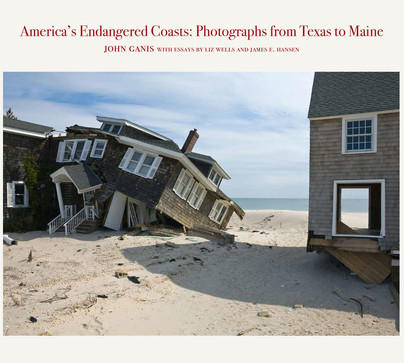
Format: Hardback
Pages: 232
ISBN: 9781938086434
Pub Date: 06 Dec 2016
Illustrations: 168 color photographs
Description:
America’s Endangered Coasts: Photographs from Texas to Maine is a pioneering and thought-provoking photographic survey of coastal areas of the Atlantic and Gulf Coasts of the United States that are already threatened by a rising sea. Using a topographic aesthetic that combines straightforward, highly detailed color photographs with GPS locations and elevations above sea level for each site, this book photographically responds to low-lying areas that are frequently over-developed and vulnerable to high tides and storms such as Hurricanes Katrina, Irene, and Sandy. This book contains 168 color photographs and two essays, one by Liz Wells, a prominent British writer who offers a photo/art perspective of the work, and one by Dr.
James E. Hansen, based on his prophetic scientific understandings of the climate-change crisis and some ways to address it. Current scientific projections conclusively show that the future of civilization along the world’s coasts is at stake due to the climate-change crisis. According to the latest conservative projections, Earth’s sea levels will rise by no less than three to four feet within a century and very possibly much more. This amount of sea-rise, compounded by hurricanes and storm surges, will threaten and make unsustainable large portions of the coastal areas of the Gulf of Mexico, from Texas to Florida, and the Atlantic seaboard, from Florida to Maine. All coastal areas of the world, in fact, are at risk, since nearly half of the world’ population lives along and near coastal regions. America’s Endangered Coasts promises to make an important contribution to the world of photographic art and to the public’s awareness of climate change and its impact on everyday life. The book serves as both a warning of things to come and a photographic document of lasting historical value, since many areas that Ganis has photographed will be underwater by 2100. It is the first book of its kind to offer such comprehensive geographic coverage of representative areas along the Atlantic and Gulf Coasts that are threatened now and in the future by a rising sea. “The coasts we’ve always known are shifting before our eyes. John Ganis’s fine book helps us with the job of paying witness; may it spur us to the job of preventing further damage.” — BILL MCKIBBEN, SCHUMANN DISTINGUISHED SCHOLAR IN ENVIRONMENTAL STUDIES AT MIDDLEBURY COLLEGE AND AUTHOR OF EARTH AND THE END OF NATURE “John Ganis has long been dedicated to exposing how the United States uses and abuses its lands. His photographs are clear and moving, putting us in places we have never been and encouraging us to see them. America’s Endangered Coasts constitutes another powerful wake-up call from the front lines of climate-change awareness.” — LUCY R. LIPPARD, AUTHOR OF THE LURE OF THE LOCAL AND UNDERMINING: A WILD RIDE THROUGH LAND USE, POLITICS, AND ART IN THE CHANGING WEST
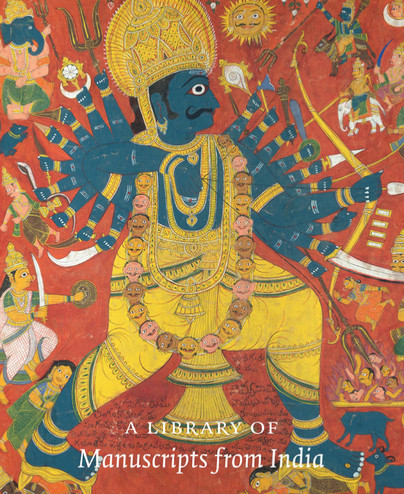
Format: Paperback
Pages: 72
ISBN: 9781911300120
Pub Date: 30 Nov 2016
Illustrations: 95 colour illus.
Description:
The rich variety of languages, religious traditions and schools of art of the Indian subcontinent are brought together in this exceptional library of Indian manuscripts. Religious and philosophical texts from Buddhist, Hindu, Islamic, Jain, Sikh and Zoroastrian schools of thought are all represented in illustrated manuscripts. This library shows how these various faiths borrowed, interacted and influenced one another in the subcontinent.
From palm leaf manuscripts of the South to pothi format manuals from the Himalayas in Nepal, to the sophisticated and highly illustrated manuscripts of the Imperial Moghul court, this catalogue takes the reader on a visual journey through great epics, charged romances and colourful cautionary tales. Highlights include an important and lavishly illustrated palm-leaf manuscript by ‘The Emperor of Poets’, Upendra Bhanja (c. 1640–1740 ce), and a rare Bihar-I Danesh (The Springtime of Knowledge) by Shaikh ‘Inayatallah Kamboh of Delhi, from late 17th/early 18th century – the finest known copy of the manuscript. An exceptional album of 18th-century Indian paintings from the Liechtenstein Princely Collections offers insight into the fascination for Indian courtly life among the nobility of Europe. A number of exceptional painted scrolls are also presented here. Scroll painting has a long history in India. Story tellers would travel from village to village giving performances of well-known epics and regional stories often accompanied by musicians and with the visual aid of a painted scroll. One particularly vibrant scroll, over 15 metres in length, of the Madel Puranamu, was probably commissioned by a wealthy member of the dhobi caste to celebrate his community’s origins and favour with Shiva. Among the many intruiging maps and manuals – on art, astrology, omens, divination and auspicious symbols – is an 18th-century Nepalese sorcer’s manual, which contains instructions for protective and exorcistic Shaiva rituals, mantras and sacrificial blood-offerings. Its binding includes feathers and traces of blood and skin, which by tradition are fragments of the ‘five beasts’ – buffalo, chicken, dog, goat and cow.
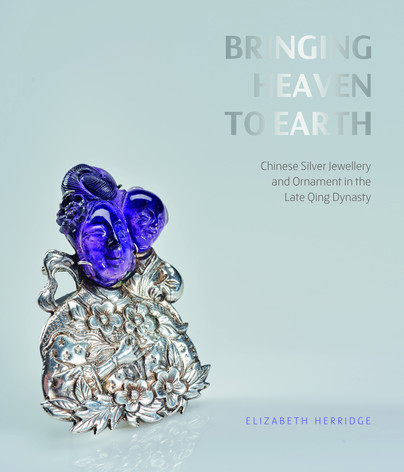
Format: Paperback
Pages: 200
ISBN: 9780995557703
Pub Date: 30 Nov 2016
Illustrations: 150 images
Description:
The prowess of Chinese creative abilities in the decorative arts in the 19th and early 20th centuries was well known globally, but, while much has been written about Chinese textiles and on the influence of the East on European styles of the time, the story of the influence of Western formats and tastes on the manufacture of Chinese jewellery in the period has, amazingly, never been told. In examining 50 objects of exatraordinary quality from an important private North American collection, this book seeks to redress the situation and reveal the splendour of silver and silver-gilt jewellery of the late Qing dynasty. An ancient and sophisticated culture, the Chinese – who have since records begun made up about a quarter of world’s population – had almost everything they could need or want within their own borders … except for silver.
The metal had long cultural, commercial and governmental associations but had to be imported largely from South America, after both national and Japanese reserves were quickly exhausted by huge Chinese demand. Beginning in the mid 19th century – where the story told here begins – after two successive defeats in the Opium Wars, sixteen treaty ports were established on coastal and inland cities, enabling Western merchants freer movement and trade with the Chinese. The 50 pieces of jewellery and ornament presented here have been beautifully photographed and carefully documented. In superb unrestored condition, the objects incorporate exotic materials like tiger-shark teeth, teak wood, amber, precious and semi-precious stones from India and Sri Lanka, enamel, as well as finely carved and pierced nephrite, jadeite and lapis lazuli. Daoist imagery and motifs dominate but with the inclusion of some surprising Buddhist imagery as well. Though not from the imperial collection of the Qing, these exquisite pieces were seemingly commissioned and worn by prosperous members of the society from all over the vast country. The differences in manufacture, even in this varied sample of 50 items, is striking. Their appeal is more than just aesthetic, and their design and decoration speak of the social, religious, economic and political climate of their time. Questions regarding the sale and consumption of these object are discussed, and changing local and foreign tastes in the wake of the fall of the Qing dynasty and the establishment of the Republican period are also addressed.
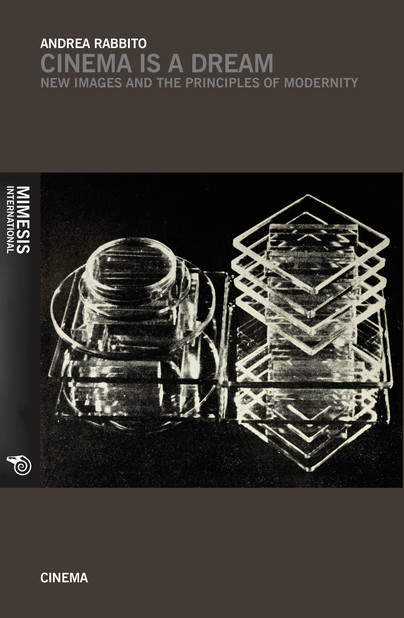
Format: Paperback
Pages: 232
ISBN: 9788869770661
Pub Date: 30 Nov 2016
Illustrations: 44 illustrations
Description:
The emergence and spread of new images - photography, film, television and audiovisual - have established an important epistemological revolution oriented contemporary man to take on a confident attitude not only towards the image but also to the real. The modern knowledge, that made explode man’s certainties in hundreds of relative truth, has been removed; the perfect double of reality offered by the new media has quietly deleted the doubt to the faithful restitution of reality into images, and, consequently, to the events of the outside world. To counter this credulity, this mental breakdown, so defined by Joseph Conrad, became widespread in contemporary society, we will need to recover the principles and themes of modern thought born in the seventeenth century.
A recovery, this, that will serve not only to oppose the illusions and deceit, but also to better understand the nature of the new images.
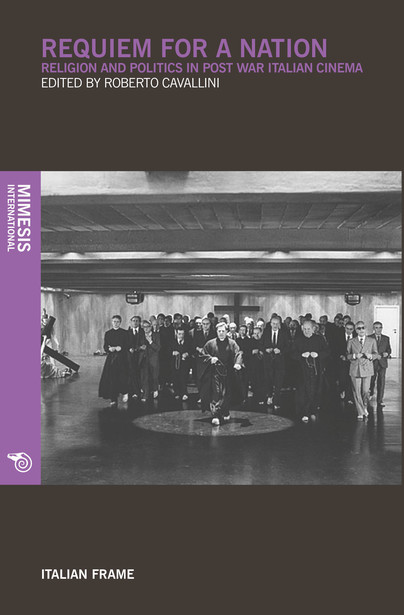
Format: Paperback
Pages: 156
ISBN: 9788869770562
Pub Date: 30 Nov 2016
Illustrations: 5 illustrations
Description:
The main objective of this edited collection is to examine the ways in which religion, culture and politics converge in configuring the contradictions of a post-war Italy’s cultural history. Starting from the assumption that to conduct a critical reflection on Italian post-war visual culture one must investigate the inevitable impact of Catholic religion on everyday life and its social, political and cultural dimensions, the volume employs the vantage point of cinema to propose a critique and exploration of religion’s influence on the Italian cultural landscape. The edited anthology thus seeks to examine how religion is lived, performed, criticized and represented from various methodological perspectives (historical, philological, aesthetic, psychoanalytical, popular studies etc), through four main sections: ‘Propaganda and Censorship’, ‘Auteurial Voices’, ‘Religion in Popular Italian Cinema’, ‘Modern rituals, Ancient myths’.
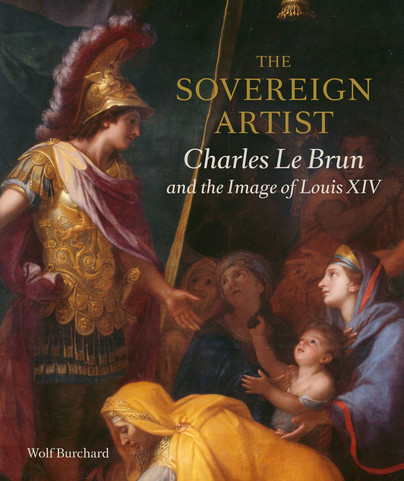
Format: Hardback
Pages: 248
ISBN: 9781911300052
Pub Date: 30 Nov 2016
Description:
In his joint capacities of Premier peintre du roi, director of the Gobelins manufactory and rector of the Académie royale de peinture et de sculpture, Le Brun exercised a previously unprecedented influence on the production of the visual arts – so much so that some scholars have repeatedly described him as ‘dictator’ of the arts in France. The Sovereign Artist explores how Le Brun operated in his diverse fields of activities, linking and juxtaposing his portraiture, history painting and pictorial theory with his designs for architecture, tapestries, carpets and furniture. It argues that Le Brun sought to create a repeatable and easily recognizable visual language associated with Louis XIV, in order to translate the king’s political claims for absolute power into a visual form.
How he did this is discussed through a series of individual case studies ranging from Le Brun’s lost equestrian portrait of Louis XIV, and his involvement in the Querelle du coloris at the Académie, to his scheme for 93 Savonnerie carpets for the Grande Galerie at the Louvre, his Histoire du roy tapestry series, his decoration of the now destroyed Escalier des Ambassadeurs at Versailles and the dramatic destruction of the Sun King’s silver furniture. One key theme is the relation between the unity of the visual arts, to which Le Brun aspired, and the strong hierarchical distinctions he made between the liberal arts and the mechanical crafts: while his lectures at the Académie advocated a visual and conceptual unity in painting and architecture, they were also a means by which he attempted to secure the newly gained status of painting as a liberal art, and therefore to distinguish it from the mechanical crafts which he oversaw the production of at the Gobelins. His artistic and architectural aspirations were comparable to those of his Roman contemporary Gianlorenzo Bernini, summoned to Paris in 1665 to design the Louvre’s East façade and to create a portrait bust of Louis XIV. Bernini’s failure to convince the king and Colbert of his architectural scheme offered new opportunities for Le Brun and his French contemporaries to prove themselves capable of solving the architectural problems of the Louvre and to transform it into a palace appropriate “to the grandeur and the magnificence of the prince who [was] to inhabit it” (Jean-Baptiste Colbert to Nicolas Poussin in 1664). The comparison between Le Brun and Bernini not only illustrates how France sought artistic supremacy over Italy during the second half of the 17th century, but further helps to demonstrate how Le Brun himself wanted to be perceived: beyond acting as a translator of the king’s artistic ambition, the artist appears to have sought his own sovereign authority over the visual arts.

Format: Hardback
Pages: 160
ISBN: 9781910221112
Pub Date: 23 Nov 2016
Imprint: Anomie Academic
Illustrations: c. 12
Description:
Daphne Oram (1925–2003) was one of the central figures in the development of British experimental electronic music. Having declined a place at the Royal College of Music to become a music balancer at the BBC, she went on to become the co-founder and first director of the BBC Radiophonic Workshop. Oram left the BBC in 1959 to pursue commercial work in television, advertising, film and theatre, to make her own music for recording and performance, and to continue her personal research into sound technology – a passion she had had since her childhood in rural Wiltshire.
Her home, a former oasthouse in Kent, became an unorthodox studio and workshop in which, mostly on a shoestring budget, she developed her pioneering equipment, sounds and ideas. A significant part of her personal research was the invention of a machine that offered a new form of sound synthesis – the Oramics machine. Oram’s contribution to electronic music is receiving considerable attention from new generations of composers, sound engineers, musicians, musicologists and music lovers around the world. Following her death, the Daphne Oram Trust was established to preserve and promote her work, life and legacy, and an archive created in the Special Collections Library at Goldsmiths, University of London. One of the Trust’s ambitions has been to publish a new edition of Oram’s one and only book, An Individual Note of Music, Sound and Electronics, which was originally published in 1972. With support from the Daphne Oram Archive, the Trust has now been able to realize this ambition. An Individual Note is both curious and remarkable. When commissioned to write a book, she was keen to avoid it becoming a manual or how-to guide, preferring instead to use the opportunity to muse on the subjects of music, sound and electronics, and the relationships between them. At a time when the world was just starting to engage with electronic music and the technology was still primarily in the hands of music studios, universities, and corporations, her approach was both innovative and inspiring, encouraging anyone with an interest in music to think about the nature, capabilities and possibilities that the new sounds could bring. And her thinking was not limited to just the future of the orchestra, synthesizer, computer and home studio, but ventured, with great spirit and wit, into other realms of science, technology, culture and thought. An Individual Note is a playful yet compelling manifesto for the dawn of electronic music and for our individual capacity to use, experience and enjoy it. This new edition of An Individual Note features a specially commissioned introduction from the British composer, performer, roboticist and sound historian Sarah Angliss.
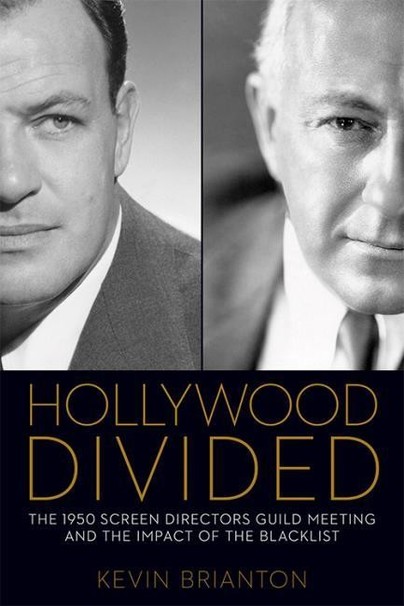
Format: Hardback
Pages: 174
ISBN: 9780813168920
Pub Date: 15 Nov 2016
Illustrations: 13 b/w photos
Description:
On October 22, 1950, the Screen Directors Guild (SDG) gathered for a meeting at the opulent Beverly Hills Hotel. Among the group's leaders were some of the most powerful men in Hollywood -- John Ford, Cecil B. DeMille, Joseph L.
Mankiewicz, John Huston, Frank Capra, William Wyler, and Rouben Mamoulian -- and the issue on the table was nothing less than a vote to dismiss Mankiewicz as the guild's president after he opposed an anticommunist loyalty oath that could have expanded the blacklist. The dramatic events of that evening have become mythic, and the legend has overshadowed the more complex realities of this crucial moment in Hollywood history.In Hollywood Divided, Kevin Brianton explores the myths associated with the famous meeting and the real events that they often obscure. He analyzes the lead-up to that fateful summit, examining the pressure exerted by the House Un-American Activities Committee. Brianton reveals the internal politics of the SDG, its initial hostile response to the HUAC investigations, the conservative reprisal, and the influence of the oath on the guild and the film industry as a whole. Hollywood Divided also assesses the impact of the historical coverage of the meeting on the reputation of the three key players in the drama.Brianton's study is a provocative and revealing revisionist history of the SDG's 1950 meeting and its lasting repercussions on the film industry as well as the careers of those who participated. Hollywood Divided illuminates how both the press's and the public's penchant for the "exciting story" have perpetuated fabrications and inaccurate representations of a turning point for the film industry.
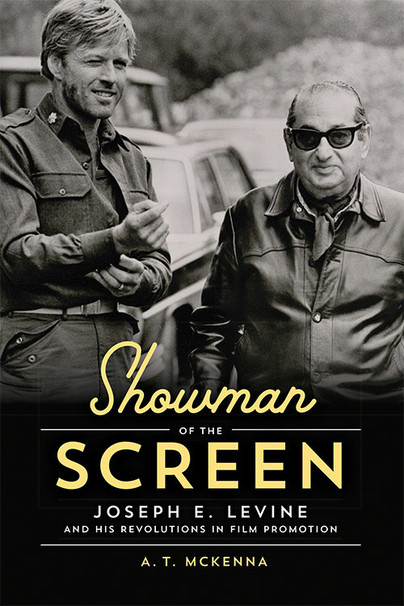
Format: Hardback
Pages: 296
ISBN: 9780813168715
Pub Date: 01 Nov 2016
Illustrations: 30 b/w images
Description:
Short, immaculately dressed, and shockingly foul-mouthed, Joseph E. Levine (1905--1987) was larger than life. He rose from poverty in Boston's West End to become one of postwar Hollywood's most prolific independent promoters, distributors, and producers.
Alternately respected and reviled, this master of movie promotion was responsible for bringing films as varied as Godzilla: King of the Monsters! (1956), Hercules (1958), The Graduate (1967), The Lion in Winter (1968), and A Bridge Too Far (1977) to American audiences .In the first biography of this controversial pioneer, A. T. McKenna traces Levine's rise as an influential packager of popular culture. He explores the mogul's pivotal role in many significant industry innovations from the 1950s to the 1970s, examining his use of saturation release tactics and bombastic advertising campaigns. Levine was also a trailblazer in promoting European art house cinema in the 1960s. He made Federico Fellini's 8½ (1963) a hit in America, feuded with Jean-Luc Godard over their production of Contempt (1963), and campaigned aggressively for Sophia Loren to become the first actress to win an Oscar for a foreign language performance for her role in Two Women (1960).Despite his significant accomplishments and prominent role in shaping film distribution and promotion in the post-studio era, Levine is largely overlooked today. McKenna's in-depth biography corrects misunderstandings and misinformation about this colorful figure, and offers a sober assessment of his contributions to world cinema. It also illuminates Levine's peculiar talent for movie- and self-promotion, as well as his extraordinary career in the motion picture business.
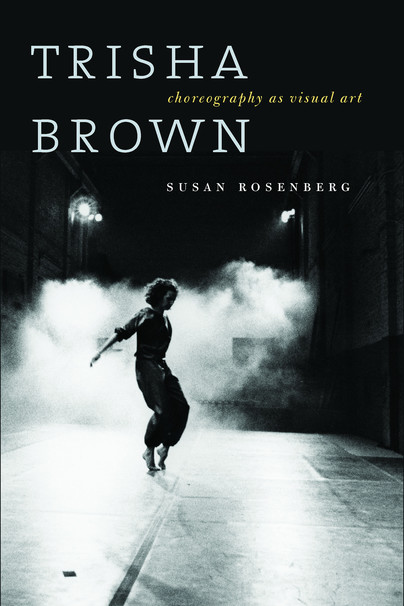

Pages: 424
ISBN: 9780819576613
Pub Date: 01 Nov 2016
Illustrations: 129 illus.
Pages: 424
ISBN: 9780819576620
Pub Date: 01 Nov 2016
Illustrations: 129 illus.
Description:
Trisha Brown re-shaped the landscape of modern dance with her game-changing and boundary-defying choreography and visual art. Art historian Susan Rosenberg draws on Brown’s archives, as well as interviews with Brown and her colleagues, to track Brown’s deliberate evolutionary trajectory through the first half of her decades-long career. Brown has created over 100 dances, six operas, one ballet, and a significant body of graphic works.
This book discusses the formation of Brown’s systemic artistic principles, and provides close readings of the works that Brown created for non-traditional and art world settings in relation to the first body of works she created for the proscenium stage. Highlighting the cognitive-kinesthetic complexity that defines the making, performing and watching of these dances, Rosenberg uncovers the importance of composer John Cage’s ideas and methods to understand Brown’s contributions. One of the most important and influential artists of our time, Brown was the first woman choreographer to receive the coveted MacArthur Foundation Fellowship “Genius Award.”

Format: Hardback
Pages: 440
ISBN: 9781911300014
Pub Date: 31 Oct 2016
Illustrations: 400 colour illus.
Description:
Focusing on the prolific trade, transport and consumption of Chinese silk and porcelain, and Japanese lacquer abroad between 1500 and 1644, this groundbreaking book will show how the material cultures of late Ming China and Momoyama/Early Edo Japan on one side of the globe, and Western Europe and the New World on the other, became linked for the first time, through an exchange of luxury Asian manufactured goods for currency. It offers new insight into these multi-layered long-distance commercial networks, which resulted in an unprecedented creation of material culture that reflected influences of both East and West. New research reveals evidence of the trade of these three Asian manufactured goods, first by Portugal and Spain, and later by the trading companies formed by the Northern Netherlands/Dutch Republic and England.
Important documentary information is brought to light concerning, for example, the use of Chinese porcelain in Western Europe, and the objects made to order in European shapes for the Dutch and English trading companies in Japan and China. The study also sheds light on both the trans-Atlantic and trans-Pacific commercial trading networks through which these Asian goods circulated, as well as the way in which these goods were acquired, used and appreciated by the Portuguese, Spanish, Dutch and English societies in Western Europe and the multi-ethnic societies of the European colonies in the New World and Asia. 400 illustrations of extant examples of Chinese silks and porcelains, along with Japanese lacquers of the period, complement the information gleaned from archival and textual material. In the case of Chinese porcelain, a large number of the examples illustrated are provided by archaeological finds from European shipwrecks, survival campsites, colonial settlements in Asia, the New World and the Caribbean, and their respective mother countries in Western Europe. Breaking new ground in its comparative study of the impact these European trading empires or companies had on the material cultures of China and Japan, this book shows the influence that the European merchants and missionaries exerted on the goods made specifically to order for them in both China and Japan. It also traces the worldwide circulation of these luxury objects, which were intended for secular and religious use in European settlements in Asia, and their respective mother countries in Western Europe and colonies in the New World. More importantly, this book shows that these specific orders led to the creation of a wide variety of hybrid manufactured goods in both China and Japan, which combined elements from very different and distant cultures, reflecting the fascinating and complex East-West cultural exchanges that occurred in the early modern period.
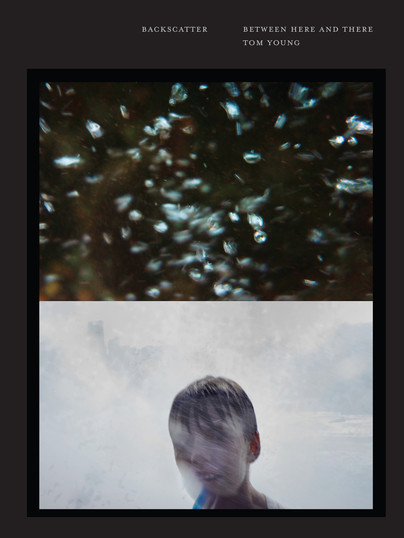
Format: Hardback
Pages: 112
ISBN: 9781938086380
Pub Date: 24 Oct 2016
Illustrations: 78 color photographs
Description:
"Backscatter is the reflection of particles, waves, or signals back to the direction from which they came: in underwater photography, back to the lens. The reflection, however, is diffuse, as opposed to clear like a mirror, thus softening images and even making them obscure.For this book, Tom Young has embraced backscatter as both subject and metaphor to render spaces below and above the water's surface—between here and there—in highly original ways.
Our senses are awakened as Young creates images that evoke an evolutionary path from sea to land, that speak of a global environment increasingly threatened by human action, and that enlighten our consciousness with an abiding spirit larger than ourselves. In Young's previous book, the masterful Timeline: Learning to See with My Eyes Closed, the artist was drawn to the way multiple images can be assembled into a single photographic plate that both alters the intent and enhances the meaning of the individual images. Young has followed that same path in Backscatter, as the edge of one image is shared with the edge of another that simultaneously can fuse them into one voice or let them remain as separate voices, suggesting a deep conversation either way. As the sequence evolves, so, too, does the visual narrative whose assembly of diverse images presents unexpected relationships and an unforgettable storyline. Metaphorically, Backscatter is about looking head on into a void where what lies above and below the water's surface can seem harmonious yet helter-skelter. As John Rohrbach observes in his afterword, this is a “ferocious book” that brings us to a myriad places, each one real and imagined, conveying an overall sense of the human journey through life."
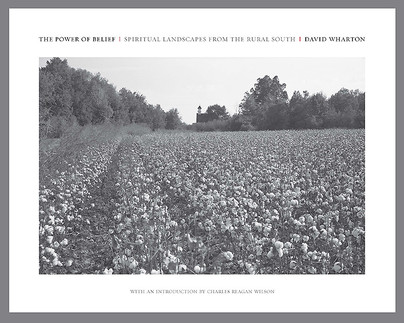
Format: Hardback
Pages: 176
ISBN: 9781938086397
Pub Date: 21 Oct 2016
Illustrations: duotone photographs by the author
Description:
Winner of the 2017 Mississippi Institute of Arts and Literature award for photography.The rural American South has no grand cathedrals or other wonder-of-the-world monuments to religious belief. Nor has it ever been the site of religious wars or large-scale religious persecutions we see throughout the world.
Nevertheless, as David Wharton reveals in his remarkable new book of photographs, the rural South is a place—a land, a region, a culture, a "way of life"—so heavily invested in religious belief that the spiritual is constantly made manifest in the ordinary. This is how religion becomes pervasive and integral to everyday life in the South for believers and nonbelievers alike.Just as David Wharton did for his pioneering book, Small Town South, he has traveled throughout the entire South since 1999, on hundreds of trips, making thousands upon thousands of photographs about the region's spiritual landscapes—from churches both active and abandoned in all vernacular shapes and sizes to actual church services and outdoor baptisms, from iconographic signs about Jesus and redemption and sin to welcoming gestures about the wonders of revivals and of grace and compassion. Lurking behind every image, however, is a sense of place about this most distinctive American region, in which religious commitment is confined neither to Sundays nor to individual houses of worship. Religion in the rural South is, quite literally, everywhere.It is Wharton's unique gift that his photographs have meaning and memory beyond merely recording the physical appearance of spiritual sites and worship activities. The people and places that appear in The Power of Belief are seen not to be a product of recent changes in religious life seen elsewhere in urban and suburban America but, instead, as an ongoing living tradition that dates back far into the history and culture of the rural South.
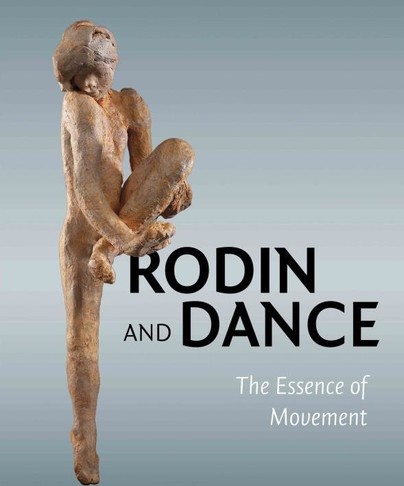
Format: Paperback
Pages: 192
ISBN: 9781907372995
Pub Date: 20 Oct 2016
Illustrations: 150 colour illus.
Description:
Rodin & Dance: The Essence of Movement is the first serious study of Rodin’s late sculptural series known as the Dance Movements. Exploring the artist’s fascination with dance and bodies in extreme acrobatic poses, the exhibition and accompanying catalogue give an account of Rodin’s passion for new forms of dance – from south-asian dances to the music hall and the avant garde – which began appearing on the French stage around 1900. Rodin made hundreds of drawings and watercolours of dancers.
From about 1911 he also gave sculptural expression to this fascination with dancers’ bodies and movements in creating the Dance Movements, a series of small clay figure studies (each approx. 30 cm in height) that stretch and twist in unsettling ways. These leaping, turning figures in terracotta and plaster were found in the artist’s studio after his death and were not exhibited during Rodin’s lifetime or known beyond his close circle. Presented alongside the associated drawings and photographs of some of the dancers, they show a new side to Rodin’s art, in which he pushed the boundaries of sculpture, expressing themes of flight and gravity. This exhibition catalogue aims to become the authoritative reference for Rodin’s Dance Movements, comprising essays from leading scholars in the field of sculpture. It includes an introductory essay on the history of the bronze casting of the Dance Movements and the critical fortune of the series, an essay on the dancers Rodin admired, and an extensive technical essay. The Catalogue will comprise detailed entries on the works in the exhibition and new technical information on the drawings. Contributors include Alexandra Gerstein, Curator of Sculpture and Decorative Arts, The Courtauld Institute of Art; Antoinette Le Normand-Romain, Director, Institut National d’Histoire de l’Art, Paris; Juliet Bellow, Associate Professor of Art History, American University in Washington, DC and currently Resident Fellow, the Center for Ballet and the Arts, New York University; FrançoisBlanchetière, Curator of Sculpture at the Musée Rodin; Agnès Cascio and Juliette Lévy, distinguished sculpture conservators; Sophie Biass-Fabiani, Curator of Works on Paper at the Musée Rodin; and Kate Edmonson, Conservator of Works on Paper at The Courtauld Gallery.


















